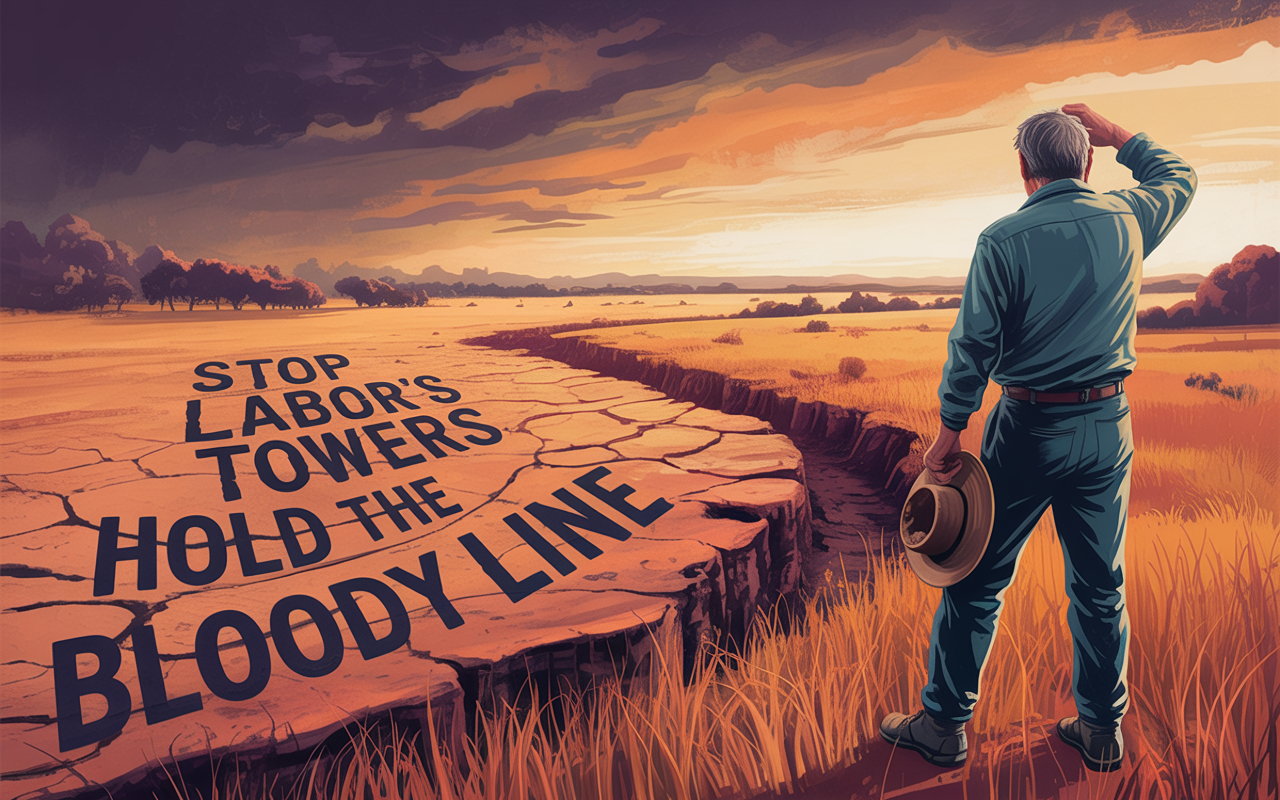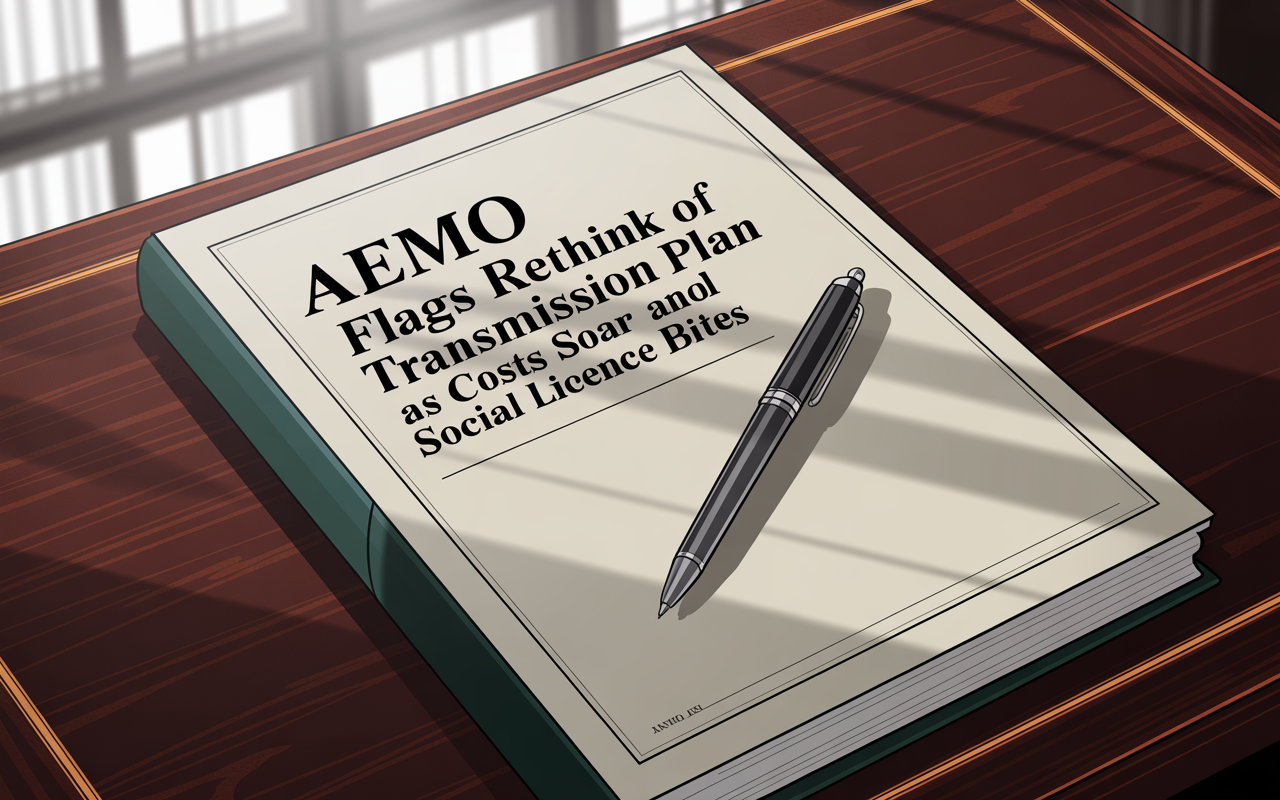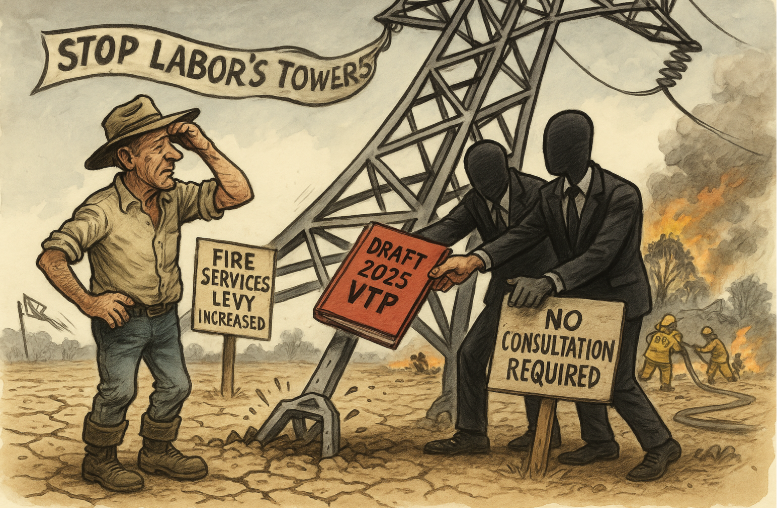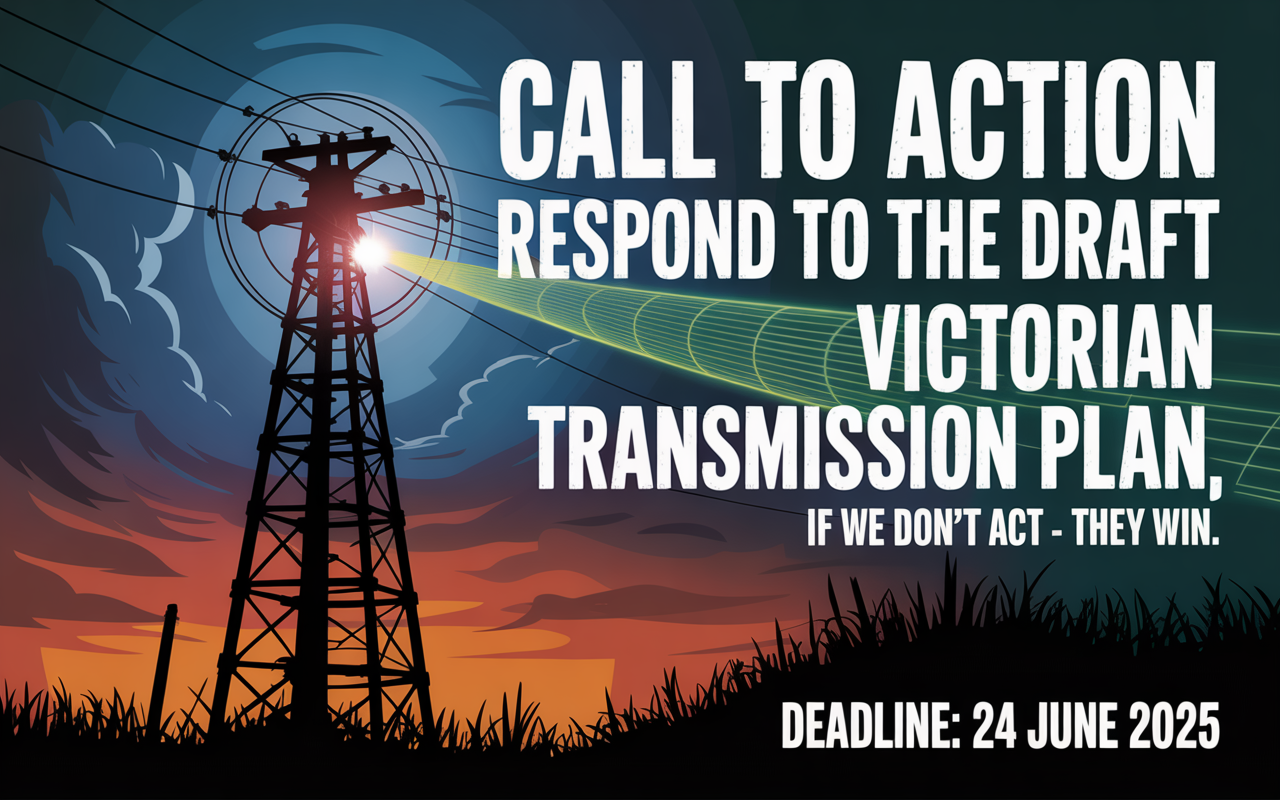
STOP LABORS TOWERS NEWSLETTER – June 1 2025

AEMO Admits Flaws in Transmission Plan but WRL Still Marches On
In what initially appears to be a welcome shift, the Australian Energy Market Operator (AEMO) has flagged a major rethink of its national transmission strategy, driven by spiralling costs and a growing backlash from communities stripped of their so-called “social licence.”
Transmission costs have ballooned from an estimated $12.7 billion to $21.1 billion, forcing AEMO to admit its current centralised, poles-and-wires approach is no longer fit for purpose.
In response, AEMO is considering a wholesale redesign of how future transmission is delivered, placing more emphasis on coordinated connections, shared infrastructure, and the integration of localised energy resources like rooftop solar and batteries. It signals a pivot toward decentralisation and more community-aligned planning.
Key pressures behind this shift include:
- Escalating Costs: Transmission lines are up to 55% more expensive, and substations around 35% more costly, due to supply chain disruptions, labour shortages, and the complexity of concurrent builds.
- Community Resistance: Strong opposition is emerging over land use, cultural heritage concerns, and the lack of transparency in planning, casting doubt on the feasibility of gaining approvals without genuine community support.
- Distributed Alternatives: AEMO is now publicly recognising the value of distributed energy resources as an alternative to costly, unpopular transmission corridors.
However, there’s a glaring contradiction at the heart of AEMO’s announcement.
Despite recognising deep flaws in its approach, AEMO will not alter or pause so-called “committed” projects—including HumeLink and VNI West even as it reconsiders the rest of its transmission agenda. Most concerning, the Western Renewables Link (WRL) continues to be falsely cited as “committed”, despite lacking key approvals, facing fierce community opposition, and now standing at odds with AEMO’s newly stated priorities.
This exposes a fundamental inconsistency: while AEMO is rethinking how the grid of the future should be delivered, it is allowing the most expensive and contentious projects built on now-questioned assumptions to proceed unchanged.
In short, AEMO has finally admitted its transmission rollout model is flawed. But for communities in Western Victoria, the damage may already be pre-baked into a plan that refuses to backtrack on its most questionable pillars.
But let it be clear, no amount of bureaucratic spin will save the Western Renewables Link. WRL may be misclassified on paper, but it will never be built. The community opposition is too strong, the fire risk too great, the farmland too precious, and the resolve of local landholders too unshakable. AEMO can cling to its flawed classifications, but this project will fall at the hands of the unrelenting resistance of those who refuse to be sacrificed for a broken energy agenda.

Western Victoria: A Land Under Siege, A People Rising
There is a kind of silence that creeps across dry earth. The rivers recede, the paddocks turn brittle, and the skies hold their breath. In Western Victoria, the silence of drought is not merely ecological – it is political, economic, and, increasingly, existential.
The region, long the backbone of Australian agriculture, is now being asked to carry yet another burden: a grotesquely misnamed infrastructure project, the Western Renewables Link (WRL). It is sold as progress, but to those who live on the land, it arrived as a threat – disguised in the robes of decarbonisation, bearing none of its justice.
At the same time, the state government proposes a significant hike in the Fire Services Property Levy (temporarily defer to save their political backside, it won’t work), which will hit rural landholders hardest – those who are already the firefighters, the fenceline defenders, the first responders. The message from Spring Street seems to be: you pay more, you burn first, and we’ll pave over your paddocks in the name of energy you won’t control and don’t want.
In truth, this is not an energy transition – it is a land grab. The WRL does not bring power to the communities it slices through. It exports it. The benefit flows outwards, but the cost is borne inwardly: scorched grazing land, devalued homes, weakened firebreaks, and cultural landscapes irreversibly altered.
Yet, amid this triple blow – drought, fire levy, and transmission tyranny – something remarkable is happening.
We are standing up.
Farmers, firefighters, Traditional Owners, young families, retirees – the very people so often spoken about – are now speaking for themselves. We are not whispering.
We are demanding proper scrutiny, and rejecting the false dichotomy that pits renewable energy against rural existence. They understand – better than the consultants and bureaucrats – that a just transition must be with communities, not through them.
This is not a NIMBY revolt. It is a cry for integrity, for a truly sustainable model that protects the land that feeds, shelters, and defines us.
The WRL, in its current form, will not proceed. Not because of legal hurdles or regulatory delays, though those may yet come. It will fail because it has lost its social licence. And in Western Victoria, that licence is not for sale.
As drought deepens, fire levy costs still loom, and this ill-planned project looms, a different kind of climate has evolved: one of resistance, unity, and grounded power.
In this fragile but fearless moment, we are not waiting to be saved. We are saving themselves – and in doing so, they are lighting a path the rest of the world might do well to follow.
Stop Labor’s Towers.
Hold the bloody line.
CALL TO ACTION – RESPOND TO THE DRAFT VICTORIAN TRANSMISSION PLAN
If we don’t act – they win.
Deadline: 24 June 2025
If we don’t act – they win.

The Draft 2025 Victorian Transmission Plan (VTP) is not a blueprint for a secure, sustainable energy future. It is a thinly veiled justification for the Western Renewables Link (WRL), a broken project forced on regional communities with no proper analysis, no transparency, and no consent.
Despite AEMO classifying WRL as merely “anticipated,” the VTP treats it as inevitable. There is no modelling of alternatives, no cost-benefit analysis, and no acknowledgement of the immense risks to farmland, bushfire zones, cultural heritage, and human health. The VTP blatantly ignores the VicGrid Act’s requirement to assess social licence, environmental impact, and community-supported alternatives.
This is not planning. It is political theatre designed to rubber-stamp outdated projects that serve the few at the expense of the many.
We have one narrow window to stop this. The VTP is open for public comment until 24 June. Every single submission matters.
Now is the time to:
- Expose the VTP’s failures its refusal to analyse alternatives, its blind support for the WRL, its erasure of regional voices.
- Demand a genuine review of the social, economic, and environmental risks of the WRL.
- Call for the inclusion of Syncline—a shovel-ready, underground HVDC alternative that follows existing corridors, protects farmland, avoids bushfire zones, and actually reflects international best practice.
Syncline is costed. It’s backed by experts. It has the support of the very communities this plan ignores. And yet it has been shut out of the conversation. That’s not a technical oversight. It’s a deliberate political decision.
This is our chance to force the government to listen. To stop a disastrous project before it begins. To replace destruction with smarter, safer solutions.
Make a submission. Demand better. Because the WRL will never be built not here, not like this, not with our consent.
Let the VTP be the turning point. Not a plan for transmission, but a call to arms.
👉 Submit now: [Insert VTP submission link] 🕛 Closes 24 June 2025.
Submit your response here: https://engage.vic.gov.au/project/victransmissionplan/survey/5817
Read the full Energy Grid Alliance response: https://www.energygridalliance.com.au/critical-analysis-of-the-draft-2025-victorian-transmission-plan/
Learn more about Syncline: https://www.synclinecommunitycable.com.au